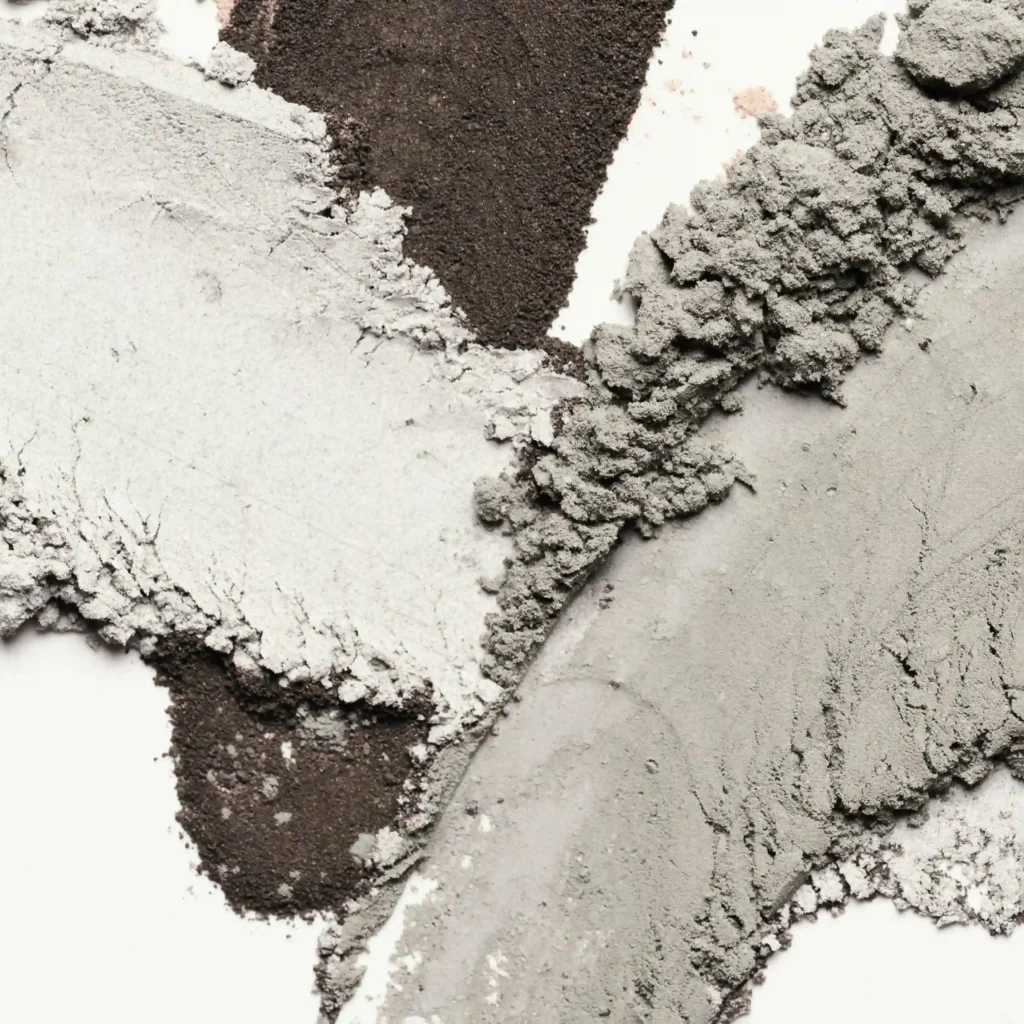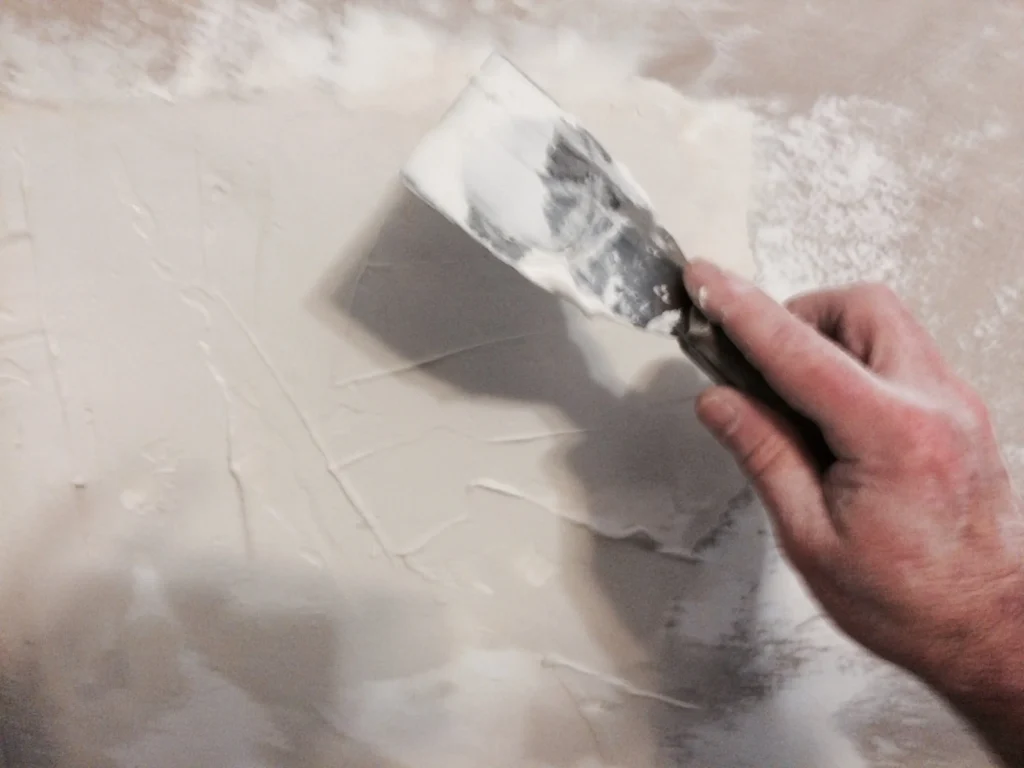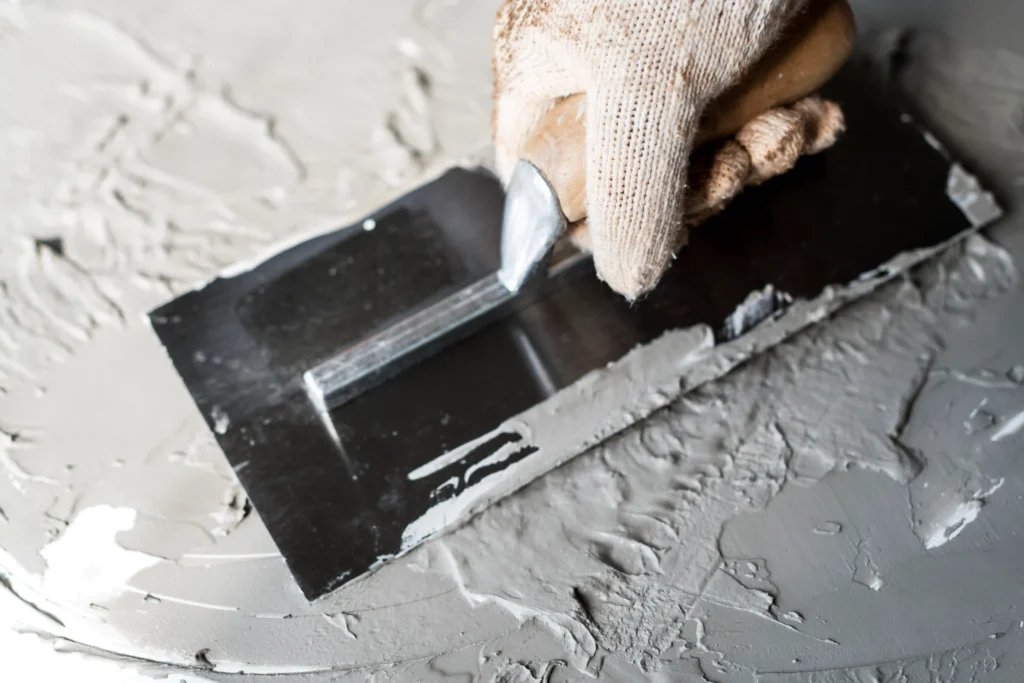
Achieving flawlessly smooth, durable, and aesthetically pleasing walls requires choosing the right base materials. Wall putty and white cement are two essential white powders used in construction, often causing confusion due to their similar appearance.
While both contribute to a quality finish, they serve distinct purposes at different stages. Understanding their differences is key to unlocking superior results and long-lasting beauty for any project. Let’s uncover the secrets behind these two ubiquitous white powders.
Wall Putty vs. White Cement: Everything You Should Know
1. White Cement
White Cement is a specialized hydraulic binder similar to grey Portland cement, but manufactured from raw materials low in iron and manganese oxides, resulting in its characteristic white color.
Primary Role: Provides structural strength, binding, and a base layer. Used in tile adhesives & grouts (especially for white/light tiles), architectural concrete, repairs, and as a strong, water-resistant base coat for plastering.


2. Wall Putty:
Wall Putty is a fine finishing powder, typically formulated using white cement and/or white lime as a base, blended with fine fillers (like calcium carbonate) and critical performance additives.
Primary Role: Applied as a thin final coat over plaster or concrete to create an ultra-smooth, uniform, crack-resistant, and paint-ready surface.
Wall Putty vs. White Cement: 5 Key Similarities
1. Shared Base Ingredient (Often): Both frequently contain white cement as a primary component. While acrylic/polymer-based putties exist, the most common type of wall putty is cement-based, meaning white cement is its fundamental binding agent.
2. Surface Preparation Role: Both are applied to prepare surfaces (typically plastered walls or concrete) for a final finish, primarily painting. They act as intermediary layers between the base substrate and the paint.
3. Improved Surface Quality & Aesthetics: Both significantly contribute to achieving a smoother, more uniform, and visually appealing final wall surface compared to bare plaster or concrete. They help fill minor pores, hairline cracks, and imperfections, creating a better canvas for paint.
4. Enhanced Paint Adhesion: Both, when properly applied and cured, create a surface that improves the adhesion of paint, leading to a more durable and longer-lasting paint finish.
5. Reliance on Quality Additives: Crucially, the performance of both materials is dramatically enhanced by incorporating Hydroxypropyl Methyl Cellulose (HPMC) and Redispersible Polymer Powder (RDP). These additives are not optional extras; they are fundamental to achieving workability, adhesion, crack resistance, and durability.
Wall Putty vs. White Cement: 5 Key Differences
1. Primary Purpose
Wall Putty is primarily used as the final preparatory coat on interior walls before painting, for filling minor imperfections, and sometimes on exterior walls (with specific products).
White Cement is primarily used for base plastering/skim coating, fixing tiles, creating decorative concrete elements, architectural repairs, and as mortar for white masonry.
2. Key Ingredients
| Feature | Wall Putty (Cement-Based) | White Cement (Typical Mixtures) |
|---|---|---|
| Primary Binder | White Portland Cement | White Portland Cement |
| Fillers | Fine Calcium Carbonate (Whiting Chalk), Quartz, Dolomite. | Sand,Marble Dust/Chips. |
| Redispersible Polymer Powder (RDP) | Common & Key Additive (2-8%) Significantly improves adhesion, flexibility, water resistance, and cohesion. Reduces cracking. |
Optional Used added in small quantities (<1-3%) in specialized tile adhesives or repair mortars for enhanced properties. |
| Hydroxypropyl Methyl Cellulose (HPMC) | Essential Additive (0.2-0.6%) Critical for water retention, workability, sag resistance, and open time. |
Optional Additive Used in modified applications like tile adhesives or thin-bed mortars (0.1-0.4%) for water retention/workability. |
| Other Common Additives | Dispersants, Defoamers, Water Repellents, Biocides, Rheology Modifiers, Retarders/Accelerators. | Plasticizers/Superplasticizers, Air Entrainers, Retarders/Accelerators, Waterproofers. |
| Water | Required for mixing to form workable paste. | Required for hydration and workability of mortar/concrete. |
3. Application Methods
3.1. Surface Preparation
Wall Putty: Workers ensure the base is completely clean, dry, sound, dust-free, oil-free, and free of loose material. Workers often apply a primer, especially acrylic, before putty.
White Cement: Workers ensure the base is completely clean, sound, dust-free, oil-free, and free of loose material. Workers thoroughly dampen porous substrates like brick or concrete immediately before application.
3.2. Application Thickness
Wall Putty: Workers apply the material in thin layers, typically one to two millimeters per coat.
White Cement: Workers apply the material at variable thicknesses; they use thicker layers for deep repairs and thinner layers for finishes.


3.3. Curing Process
Wall Putty: Workers allow the applied putty to air dry naturally.
White Cement: Workers keep the applied cement damp for the first twenty-four to forty-eight hours. Workers allow cement to cure fully over days or weeks for maximum strength.
3.4. Sanding
Wall Putty: Workers sand the dried surface thoroughly using fine-grit sandpaper.
White Cement: Workers rarely do sand repairs or grout; workers may lightly sand decorative finishes if needed.
4. Characteristic
| Feature | Wall Putty | White Cement |
|---|---|---|
| Strength | Lower Compressive Strength: Not structural. Designed for adhesion and smoothness. | High Compressive & Bonding Strength: Structural integrity is key. |
| Flexibility | More Flexible: Better accommodates minor substrate movement, reducing crack risk. | Rigid: Prone to cracking if the underlying substrate shifts or settles. |
| Shrinkage | Very Low Shrinkage: Minimizes cracking during curing. | Higher Shrinkage: Requires control joints; prone to cracking if not managed. |
| Surface Finish | Exceptionally Smooth: Designed to create a perfect painting canvas. | Smooth to Textured: Finish depends on skill, aggregate size, and troweling. |
| Water Resistance | Generally Good: Especially polymer-modified types. Some are formulated for exterior use. | Good: But porosity depends heavily on mix design. |
5. Cost
Wall Putty has a higher cost per kilogram compared to White Cement. However, because Wall Putty is applied in such a thin layer, the total material cost per square meter is often lower.
White Cement, while cheaper per kg, is used in much larger volumes, leading to a higher total material cost for covering the same area when used for plastering or concrete.
Wall Putty vs. White Cement: Which is Better For You?
- Choose Wall Putty if: You need to prepare an interior wall or ceiling for painting, filling tiny imperfections, and creating a perfectly smooth, sealed surface for optimal paint results. Essential for high-quality paint jobs.
- Choose White Cement if: You need to plaster a wall, fix tiles, repair significant cracks or damaged concrete, create decorative moldings, or need a strong, white binding material. It’s not a substitute for putty under paint.
Conclusion
Choosing between white cement and wall putty isn’t about selecting a superior product; it’s about using the right tool for the specific job stage. White cement provides the essential structural backbone and strong base. Wall putty delivers the final, flawless canvas ready for paint.
However, the true potential of both white cement formulations (like tile adhesives, grouts, and base coats) and wall putty hinges on the quality and performance of the additives used within them. High-performance Hydroxypropyl Methyl Cellulose (HPMC) and Redispersible Polymer Powder (RPP) are not mere ingredients; they are the technological foundation that transforms basic mixes into reliable, high-performing, and durable solutions.
As a leading manufacturer of premium HPMC and RPP, Mikazone provides the essential chemistry that empowers formulators to create superior white cement products and exceptional wall putty. Partner with us to ensure your building materials deliver smoothness, strength, adhesion, and crack resistance.
